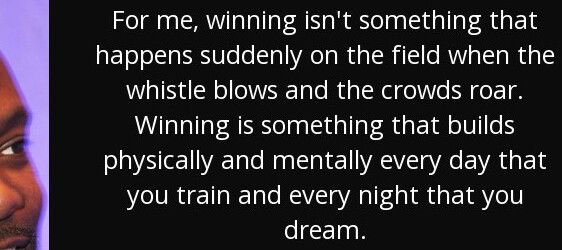5 Lessons from Great Athletes Who Use Visualization for Success

If you think visualization is a lot of hooey, think again. Throughout the ages (dating all the way back to ancient China and the days of the Roman Empire), people have been using visualization to achieve their goals. In fact, you'll find many athletes have been using these techniques for years, leading them to achieve more than they ever thought possible.
Don't believe it? Read on to explore several lessons from the great athletes themselves.
It Starts in the Vision
MMA fighter James Te Huna said, "I visualize what I'm going to do on that day, walk out to the fight. I'll go over and over it inside my head so when I do actually do it, I've been there 100 times before, so it's nothing new." By having a clear goal from the start, you've already won half the battle. What's your goal?
Great athletes spend time in their mind visualizing the perfect swing, the perfect landing, the perfect throw. They practice visualizing the result they want and desire - both on and off the field. Visualization takes place by thinking of each part of their body and how it must move to achieve the goal. The athlete will visualize each step of their desired performance when they are alone, when they are traveling, and when they are practicing their skill mentally simulating the entire process from enter the field of play, walking or running to their starting position, and each step of the action they will perform to achieve the desired result or performance.
Focus on the Success
You're not always going to make the goal perfectly. Visualization can also have a negative or reverse impact you if you get super-specific on what you want and are unable to adjust to changing circumstances such as environment, distractions, errors, or an injury. For example, picturing the perfect shot in a soccer game might leave you so hung up on doing it a certain way, you'll miss a an opportunity for a better shot you're already set up for. Instead, be sure to maintain focus on the desired the outcome when it comes to things involving factors that may be out of your control. Quickly learn to let go of errors or failures, making them opportunities for learning without dwelling on them or letting your emotions affect your performance. Use visualization to shift to what will happen next, what success looks like vs dwelling on what has happened or what went wrong.
Focus on an Image
On the other hand, it's good to focus on hard on things you can control. A study done on professional basketball players asked one simple question: Do they visualize themselves making a basket before shooting the ball. The answer was astonishing. Those who visualized the shot, made it about 67% of the time. Those who didn't? 54%. By picturing your outcome in your mind, you are that much more likely to make it.
Listen to the interview after any professional athlete wins the championship game or an Olympian achieves gold. When they are asked how they feel about winning, instead of answering with feelings of being proud, happy, or excited, they will respond with visualization references and thoughts about the actions they took to achieve success vs how they feel about winning.
Do it Often
Professional soccer player, Alex Morgan, had this to say: "Pregame, I eat pancakes for a meal. I always do mental visualization before the game to prepare myself." She's made visualization part of her routine. So should you. By repeating the visualization, you're much more likely to attain the success you desire.
Don't Forget the Work
Don't rely entirely on visualization to get you through. These athletes still practice and hone their skills every day. You still have to put the work in, no matter what it is that you want. Great athletes are the ones who are practicing their craft while others are sleeping. They are the first on to the field and the last off. They are always working on, focused on, improving, and fine tuning the things they do well in an effort to do them even a little bit better. They focus on leveraging and improving their strengths, with small incremental improvements on their weaknesses.
Success comes through many channels. Practice, self-talk…all of these things are important. But if you don't succeed first in your mind, you're never going to get anywhere. As every one of these athletes would tell you if they could, their most significant success started right here in visualization. The rest just followed naturally.
For more information on how to apply visualization techniques in your life click here for our book:
Your Inner Vision: Using Visualization to Manifest Your Ultimate Desires


